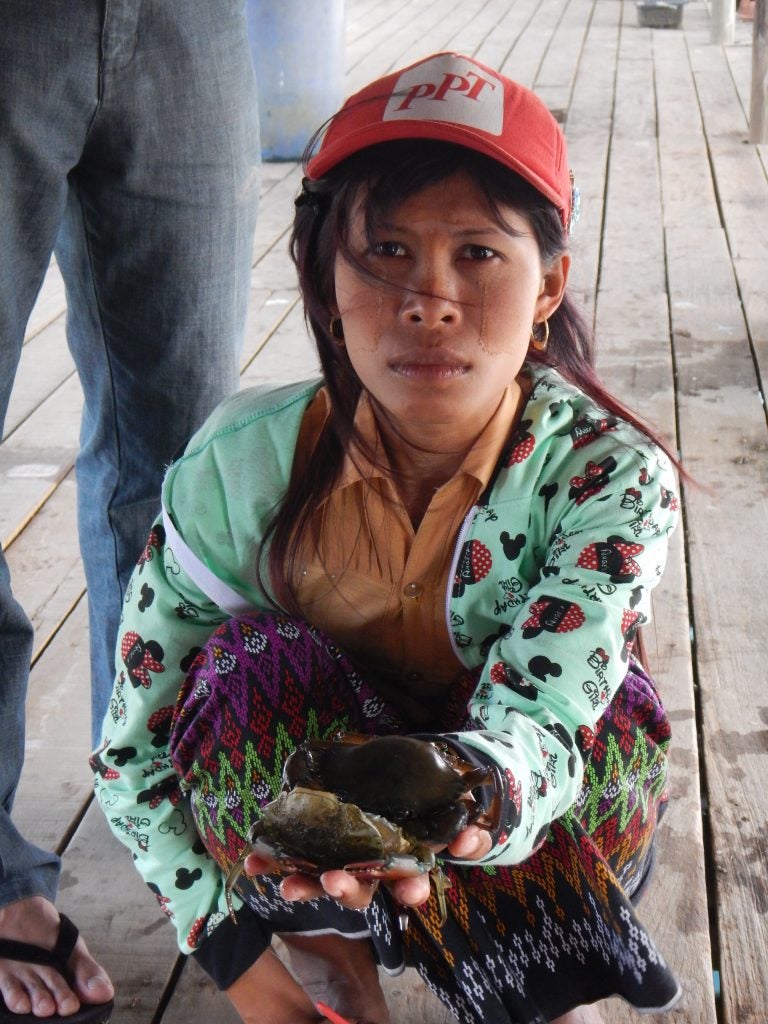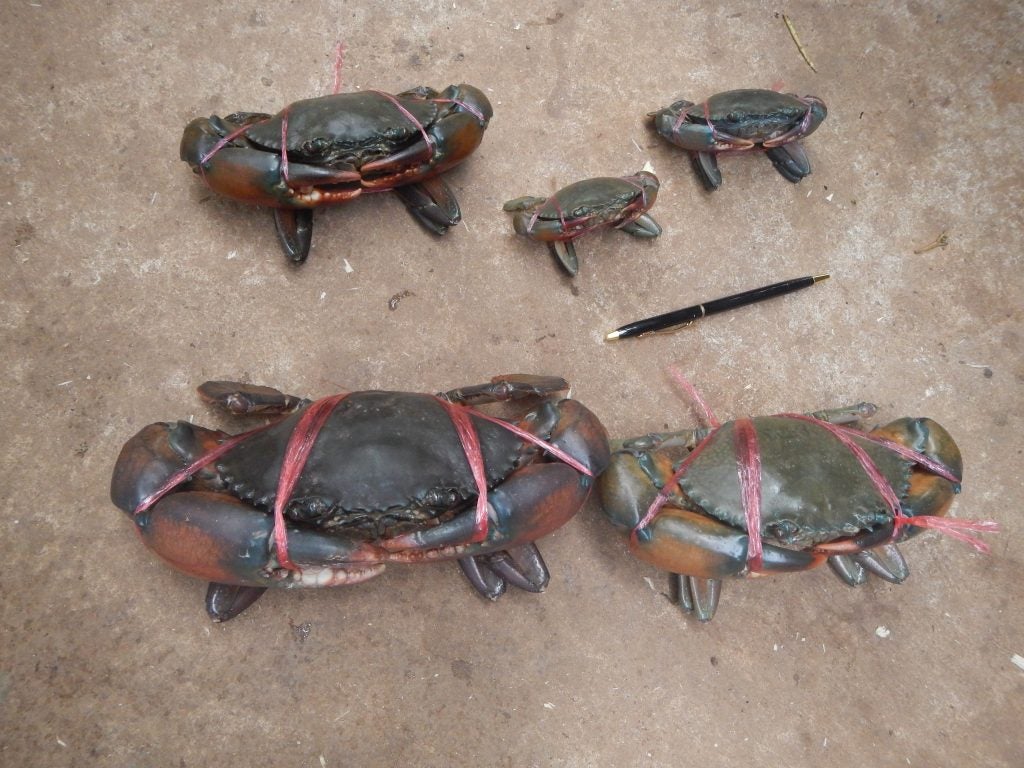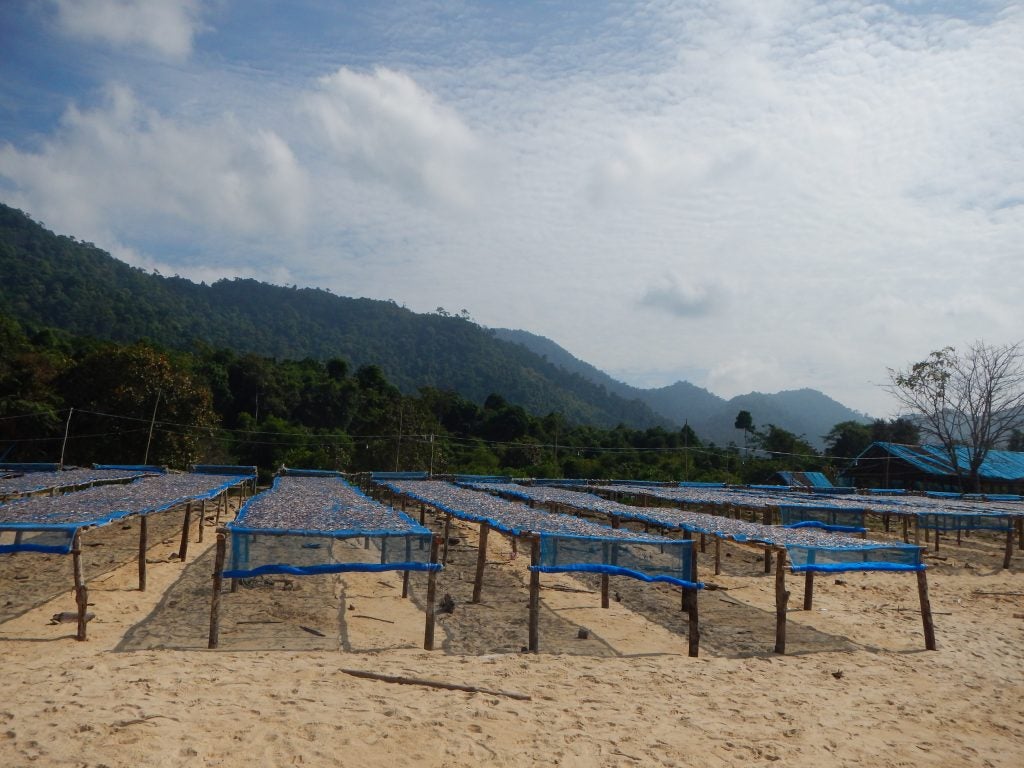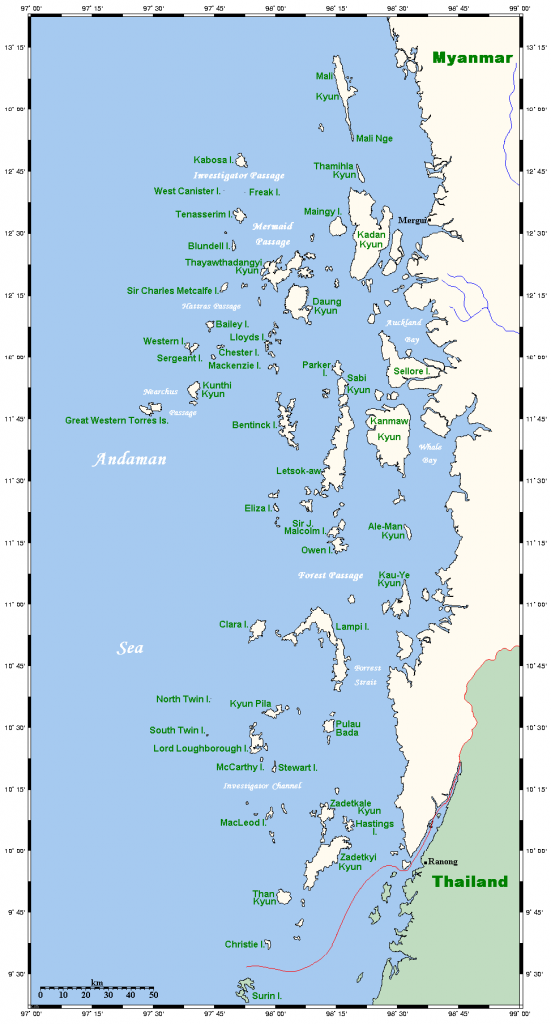
Workers help grow and maintain soft crabs that are purchased by surrounding mangrove islands within the Myeik archipelago.
Myanmar is a nation with a diverse array of ecosystems, each contributing significantly to local livelihoods, food security and culture. There is tremendous potential for Myanmar’s fisheries, if sustainably managed, to support the ecological, economic and social welfare of its people. The transition to sustainability will require an overarching plan that includes the use of new data collection and fisheries management tools to overcome the challenges these fisheries face and help them reach their full potential.
New science and collaborations among EDF, WCS and Cornell build on efforts of the Thriving Marine Fisheries in Myanmar initiative, offering solutions to support Myanmar’s efforts to steward sustainable and productive fisheries.
Myanmar’s essential fisheries:
Having the best tools and management possible is needed because marine habitats, such as coral reefs and mangrove forests are key resources that support this nearshore food base, as well as livelihoods to the citizens of Myanmar. This is because fisheries are an essential part of Myanmar’s economic development, poverty alleviation and social stability.
It is the world’s tenth largest fishing nation and more than 90% of coastal communities in Myanmar rely on nearshore fisheries for food and income. Furthermore, fisheries represent 3.5% of Myanmar’s GDP and provide 43% of all protein consumed. With fisheries crucial role in Myanmar’s economy, managers need innovative ways to manage fisheries resources effectively and sustainably.
Fortunately, there are tools designed to empower managers and resource users to address the challenges these fisheries face and develop solutions that support objectives for their fisheries.
The Myeik Archipelago
In order for these tools to be effective, comprehensive sustainable management plans are needed to ensure that all those who rely on fisheries in Myanmar can make a living. This is especially true of the Tanintharyi district, particularly the Myeik (or Mergui) Archipelago, which has a particularly high socio-economic dependence on the marine resources of the mangrove ecosystem, especially the fisheries found there.
The Myeik Archipelago contains approximately 800 islands and is situated in the north-eastern Andaman Sea. There is a long history of migration of people from other regions of Myanmar to the Myeik Archipelago, creating a rapidly evolving fishing industry. Both migratory fisherman and the ‘sea gypsy’ peoples (Moken and Salone) – who have lived off the sea for centuries – are contributing to the now rapidly growing commercial fisheries of Myanmar.
The range of fishing activities is extensive, and there is evidence of high fishing pressure, especially in the inner islands of the archipelago where both commercial and subsistence fishing is common.
Many of the villages of Myanmar rely on diverse fisheries for finfish, spiny lobster, sharks, mantis shrimp, squid and soft mud crabs as a major source of income. However, since many of the region’s fisheries generate limited data, they remain unassessed. This creates challenges for the long-term sustainability of these important resources.
Guiding effective management in fisheries with limited data:

Soft mud crabs of all sizes are captured in cages and either sold directly to international buyers or delivered to growing ponds.
Insufficient data is an obstacle to effective management of small-scale fisheries worldwide. Myanmar will be facing these challenges as it develops new management approaches for its fisheries.
An expedition to Myeik region by a team of scientists from the Atkinson Center for a Sustainable Future of Cornell University and the Smithsonian Institute provided the opportunity to visit some villages that depend on inshore fisheries within the coastal mangrove system. Using the findings from this expedition, scientists were able to suggest new tools to help the region more effectively and sustainably manage their fisheries resources.
Some management efforts are already in place in target areas that are within ten nautical miles from the shore of Taninthayi’s Coasts where boats fishing in these areas can be no more than 30 feet long and use engines of no more than 25 horsepower. Typical fishing gears used by these fisherman include drift nets, gill nets and longlines.
However, new tools and approaches will be important to move the country to long-term sustainable fisheries management. This includes innovative methods to assess and manage fisheries with limited-data. When you have good data to assess the health of the stock, management becomes more effective and both managers and fishermen can make better decisions for sustainability and their livelihoods.
Local stewardship and collaboration will be essential:

Bait fish drying on King Island.
One option for Myanmar’s entire coast is to employ co-management of local fisheries – empowering communities to sustainably steward their fisheries with collaboration between government, scientists and civil society organizations. Moving toward management that prioritizes the sustainable use of identified high-value marine habitats results in networks of no-take reserves and fishing zones and establishes a science-based framework for fisheries management.
Using sustainable fishing practices and effective management tools, Myanmar can turn the tide for coastal mangroves resources and use through collaborations that increase access to data, effective management and development of science-driven and sustainable policies.










